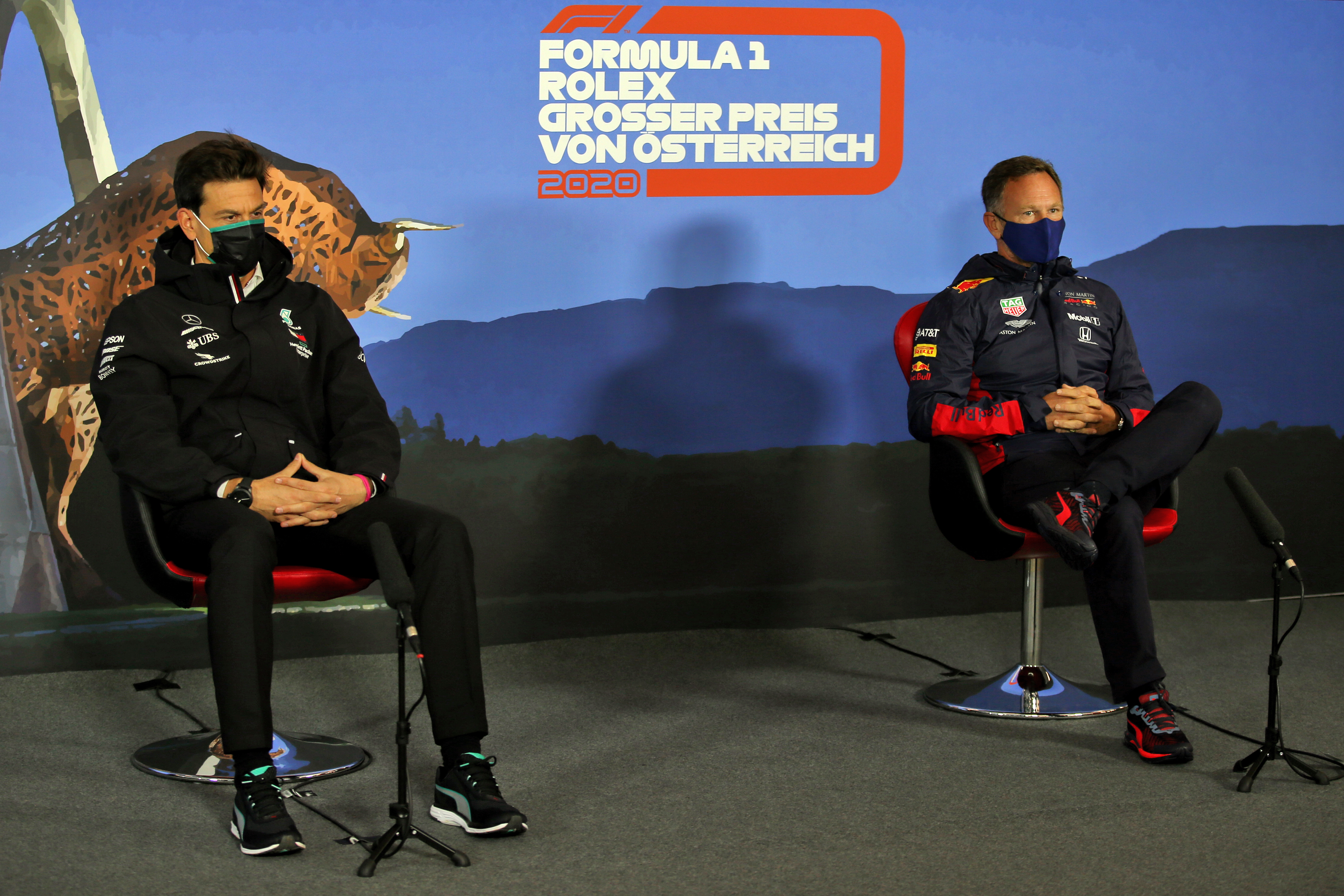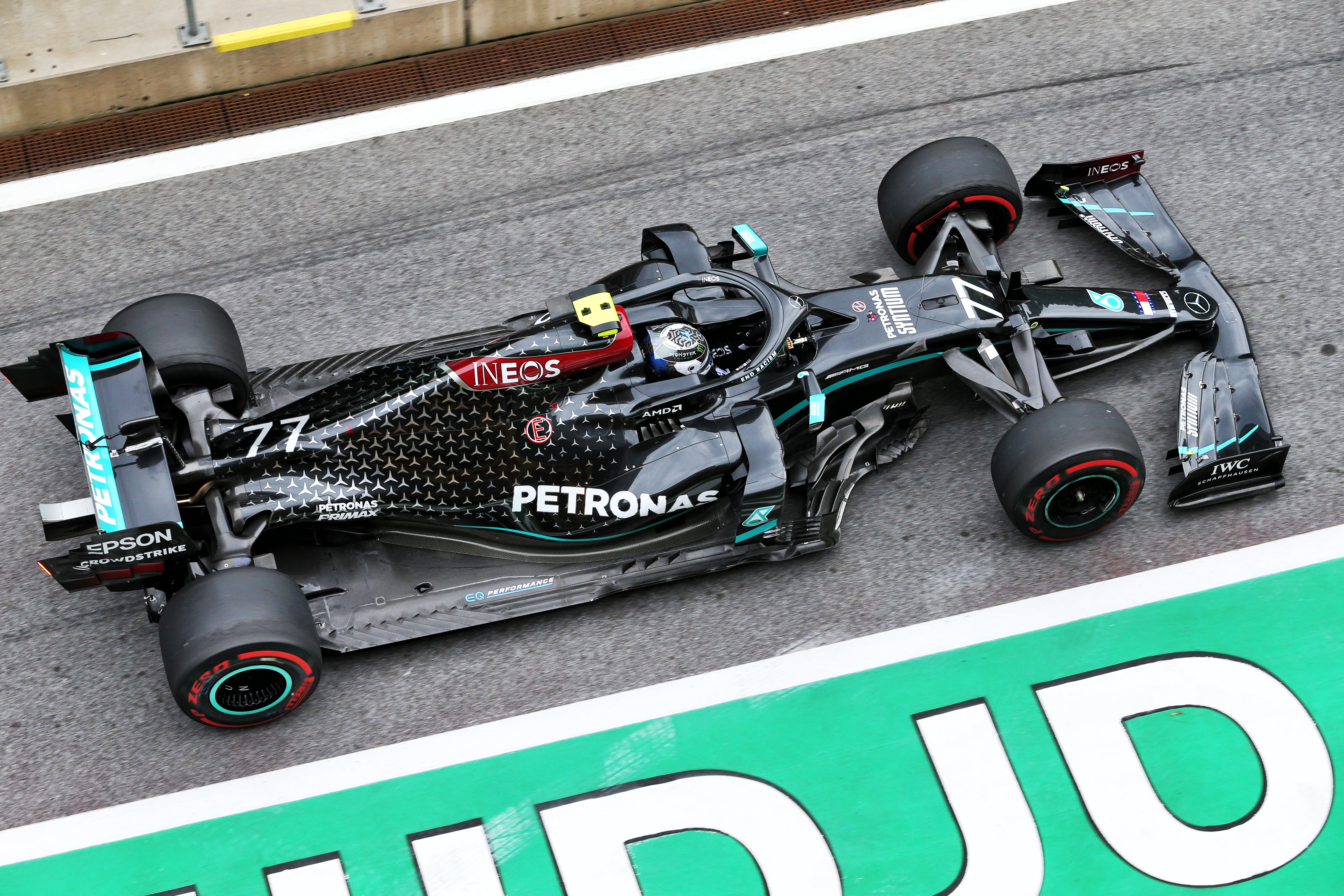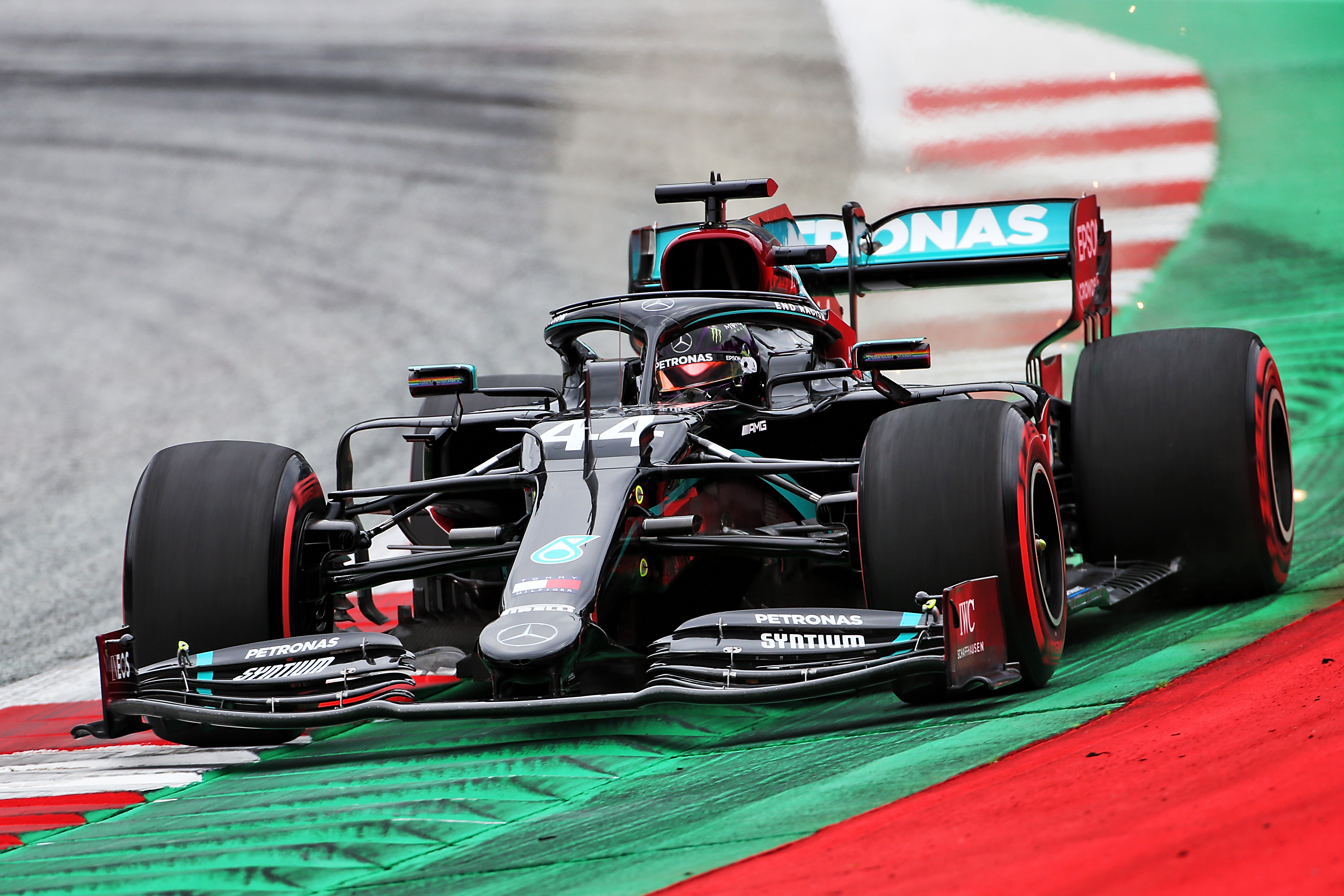The Austrian Grand Prix stewards’ ruling that the Mercedes DAS system is legal and rejection of Red Bull’s protest hinged on the conclusion that it is part of the steering system of the car, rather than part of the suspension, and therefore benefits from all of the dispensations required to make steering legal.
Steering fundamentally changes the aerodynamic performance and the suspension behaviour of the car, therefore any impact DAS has on this is legal thanks to the FIA stewards’ ruling.
RED BULL’S CASE
Red Bull protested on the basis of two sections of the FIA technical regulations.
The first, Article 3.8, covers what is called ‘aerodynamic influence’. This article is commonly referred to as banning moveable aerodynamic devices.
It was the last part of this regulation, which specifically outlaws “any car system, device or procedure which uses driver movement as a means of altering the aerodynamic characteristics of the car”, that Red Bull specifically referenced.
Article 10.2.3 states simply that “no adjustment may be made to any suspension system while the car is in motion”.

In addition to these two specific regulations, Red Bull also referenced the so-called “primary purpose” principle, whereby a design can be considered against the regulations if it exists to serve a different objective to its ostensible purpose.
Red Bull accepted a conventional F1 steering system is exempt from the above articles as applying and removing steering lock fundamentally impacts the aerodynamics and the suspension of the car.
But the crux of its case was to argue that the DAS is not part of the conventional steering system. It claimed that because the DAS “is incapable of lap navigation” in isolation it is a “separate and redundant system” to the steering.
Red Bull argued that video footage of the Mercedes from the Red Bull Ring today proved the DAS plays no part in changing the trajectory of the car, which is part of the definition of steering. It said that a secondary steering system that is incapable of steering the car is unnecessary.
It also stated that the video footage showed it was used on inlaps, outlaps and recharge laps but not timed laps, therefore its primary purpose is not steering, suggesting instead it was a tyre management system.
The FIA stewards’ summary said that Red Bull concluded: “DAS is an unnecessary, separate system requiring a separate driver input and using components which are separate in their effect to the main steering system breaching Articles 3.8 and 10.2.3.”
THE MERCEDES DEFENCE
Mercedes argued the DAS is part of the steering system on the basis that, while a conventional steering system moves the wheels in the same direction, the DAS moves the front wheels in opposition to each other, stating “it is like changing the static toe angle of the steering system”.
Mercedes also pointed out conventional steering systems change the toe as the steering angle changes.

It also stressed that changing the toe angle impacts the forces applied to the front tyres and that “any driver knows that changing the toe makes the car change its steer response”. Therefore, changing the toe does steer the car.
It described DAS as a system that allows a driver to “optimise the toe” and therefore change the steering response while on a run, rather than only being able to do it in the pits.
Having argued that DAS is a steering system, Mercedes then contended it is legal because it fulfils all the regulations governing steering as it allows for the alignment of two wheels, is not electronically controlled and passes the geometrical and safety requirements of the regulations.
Critically, Mercedes also asserted that, as it is a steering system, it “benefits from the same implicit exemptions from Article 3.8 as every conventional steering system on the grid”.
WHY DAS IS PART OF THE STEERING SYSTEM
The stewards therefore had to decide whether it accepted Red Bull’s claim that the DAS is not part of the steering system, or the argument of Mercedes that it is.
It concluded the Mercedes steering wheel has two degrees of freedom with the DAS part of that. Rotationally, the Mercedes steering wheel adjusts the wheels conventionally, while longitudinally (actuated by moving the wheel backwards and forwards) it adjusts the toe.
The stewards also stated the DAS is hydraulically assisted, which is the case with all F1 car steering systems, but fully under the control of the driver and “physically, the DAS is integrated with the conventional steering system of the car”.

The rules stipulate that at least two wheels are used for steering but that the re-alignment of more than two wheels is outlawed. The stewards said the rules do not state that the realignment must be through just one degree of freedom, meaning the wheels can move relative to each other.
The stewards interpreted the aim of the steering system as being to change the direction of the car and that, during steering, the front wheels change direction to achieve that. They also stated the toe change is asymmetric therefore, as Mercedes argued, does change the trajectory of the car. Therefore, the response of the car to a rotational input to the wheel is influenced by the toe angle of the wheels.
They also stated the fact the DAS re-aligns the front wheels using the same central mechanism as the conventional steering is equivalent to conventional steering. “The fact it acts on the track rod is, we believe, entirely equivalent to the conventional steering,” they said.
Because of these conclusions, the stewards said: “DAS can be legitimately considered to be part of the car’s steering system, and hence it should be subjected to the same implicit or explicit regulations as the conventional steering system.”
WHY DAS ISN’T PART OF THE SUSPENSION
While the alignment of the wheels affects the suspension, this was considered incidental. The FIA stewards concluded that Article 10.2.1 separates the function of the suspension and that of the steering meaning the DAS, as part of the steering system, is axiomatically not part of the suspension.
As the DAS is a second degree of freedom within that steering system, it is therefore legal for the same reasons a conventional steering system is. This principle also cleared DAS in relation to a number of other regulations, including Article 3.8 and technical directive TD/003-18 that covers “ride height with steer”.
THE STEWARDS’ CONCLUSION
The stewards formally ruled the DAS is part of the steering system, albeit not a conventional one, leading to it stating there was no basis to Red Bull’s protest.
The stewards’ statement concluded: “For the above reasons the stewards conclude that the DAS system is not part of the suspension, nor can it be considered to illegitimately adjust the suspension.
“Therefore, the stewards consider DAS to be a legitimate part of the steering system and hence to satisfy the relevant regulations regarding suspension or aerodynamic influence.
“In the opinion of the stewards, the DAS system is physically and functionally a part of the steering system. As such, it benefits of the implicit exceptions to certain suspension regulations applicable to steering.”


